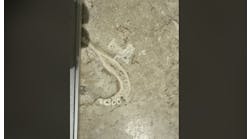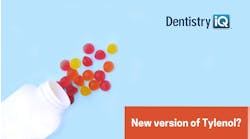One of the biggest challenges as a provider in a dental practice is surviving the schedule. Like any other health-care specialty, we face many unexpected circumstances that can turn a seemingly straightforward clinical day into complete chaos and confusion. While some scenarios simply can’t be expected or avoided, there are many proactive measures clinicians can take to have a productive, organized schedule. Here are some things to consider when creating the schedule of your dreams.
Get strategic with your schedule
As one might assume, a great clinical day rarely just happens—it requires planning and intention. This is where creating a template based on your ideal or “perfect day” comes in handy. Many clinicians do this by determining their production goal for the day and then creating blocks for various types of appointments that will allow them to meet their goal.
For a dentist, this might mean allocating blocks for low-production procedures, high-production procedures, and breaks to complete hygiene exams. For a hygienist, this could mean designating blocks for new patients, adult preventive visits, pediatric preventive visits, and nonsurgical periodontal therapy sessions.
The key for any provider is to include a variety of appointment types, be realistic about the amount of time needed for each type of procedure, and strictly adhere to the template.
More Clinical Hacks …
Set boundaries for late patients
In a perfect world, every patient would show up for their appointment on time, but we know better. Whether it’s due to traffic, car trouble, or a long line at Starbucks, patients arriving late for an appointment can create a great deal of stress for the practice in its efforts to accommodate them. It’s important to create and reinforce protocols that will support the team in managing these situations to prevent the schedule from derailing and to discourage continued behavior from patients in the future.
Decide on a cutoff time when appointments must be rescheduled; many practices have a “15-minute rule,” but your team might prefer more or less time. Instead of seeing it as a form of punishment for the patient, many clinicians would agree that establishing boundaries allows them to provide the very best level of care without having to cut corners or rush to stay on time. An alternative response a late patient would be to offer a portion of the planned services, and then schedule the patient to return on another day to complete the visit.
Quantity doesn't equal quality
When it comes to meeting office goals, there are two primary schools of thought: the high-volume, low-production approach or the low-volume, high-production approach. Some clinicians associate the word “production” with high-pressure sales tactics and aggressive treatment planning, but individualized patient education is the heart and soul of a positive experience with matching numbers.
While it might be tempting to shorten appointment times or stretch a provider between two columns to increase the number of patients seen during a clinical day, it is typically done at the expense of patient education. This is especially true when it concerns the hygiene schedule. Ample time must be reserved to perform an intra- and extraoral assessments and discuss clinical observations, disease progression, at-home instructions, and treatment recommendations. Showing patients their intraoral photos and radiographic findings takes time and greatly benefits both the patient and the practice.
Teamwork counts: Remember, you're in it together
Successful execution of a clinical schedule requires participation from every member of the dental team. There are too many factors beyond a provider’s control that make it impossible for them to fully manage every aspect of their column as the day progresses. Support can look many ways, but it works best when it’s requested in advance. Auditing one’s schedule, identifying potential challenges, and asking for help during the team’s morning huddle is ideal. When unexpected complications arise during the day, it’s best not to simply assume that others will notice and offer their assistance, because they are likely focused on their own responsibilities. Instead, clearly communicate your needs in the moment and ask for support. This sense of dependability and reliability must also be reciprocated when needed.
The clinical schedule can either be a source of panic or peace, depending on how it is utilized. Ultimately, the amount of intention that you invest will determine the outcome. Planning the day, taking control of unexpected situations, focusing on quality over quantity, and recruiting the team’s support will not only make for an enjoyable experience for the clinician but also the patient.
Editor’s note: This article first appeared in Clinical Insights newsletter, a publication of the Endeavor Business Media Dental Group. Read more articles and subscribe.
Bethany Montoya, BAS, RDH, is the editorial director of DentistryIQ Clinical Insights, is a practicing dental hygienist, and serves the industry as an author, speaker, and thought leader. She has devoted her most recent years to her social media brand, @HumanRDH, where she creates content focusing on career fulfillment, mental health, and the “human” aspect of oral health care. Contact her at [email protected].





